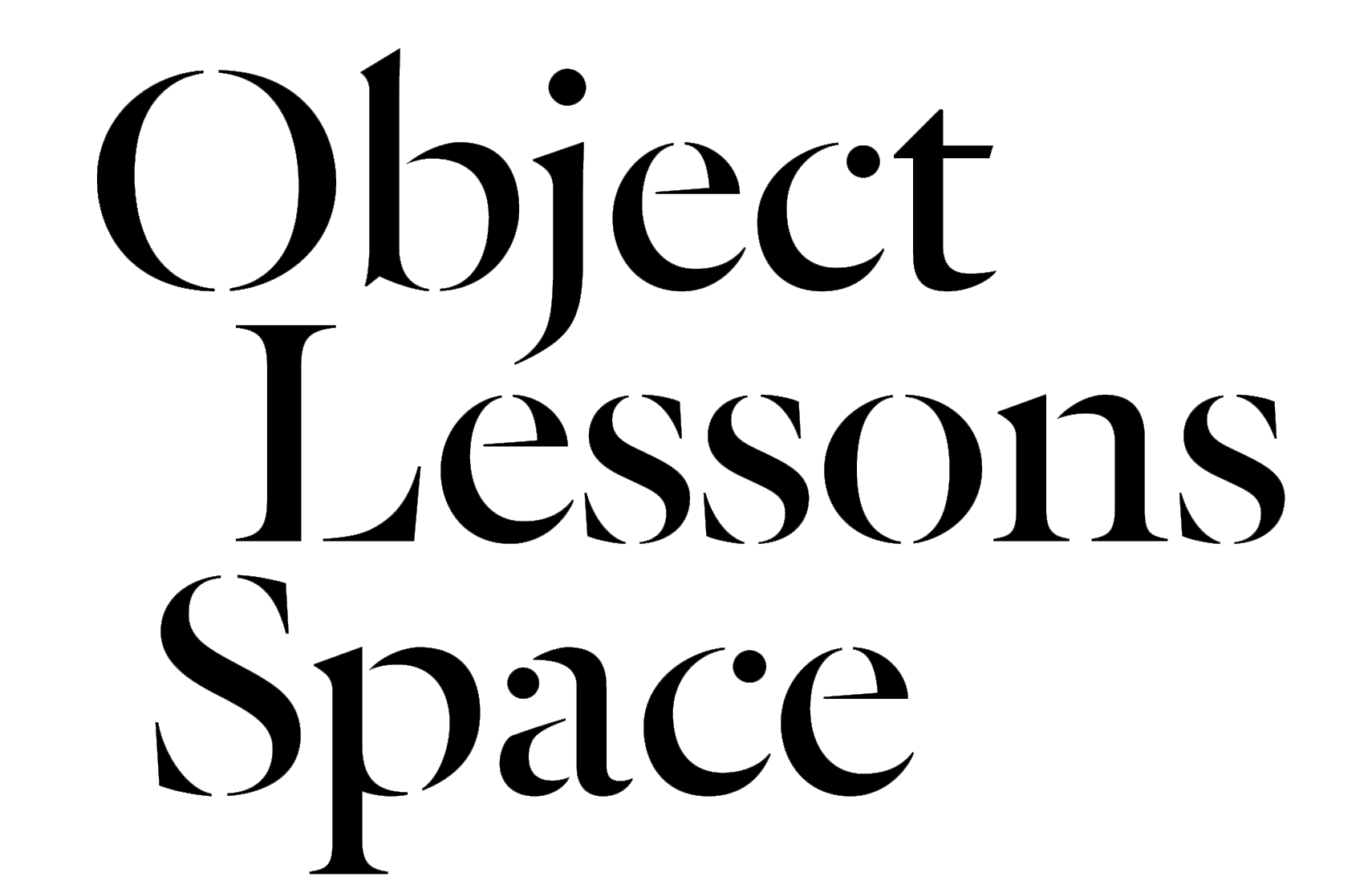Slow
Conversations
Issue: On Psychogeographies
Issue: On Psychogeographies
Tara Fatehi Irani (1987, Tehran) makes art, writes and performs. Her practice explores the ephemeral interactions between memories, words, bodies and sites through performance, text, videos, music and dance. She has performed at the Royal Academy of Arts, SPILL Festival, Battersea Arts Centre, RichMix, Nuffield Theatre (Lancaster), Toynbee Studios, HighFest and Molavi Theatre amongst others. Her book Mishandled Archive is published by Live Art Development Agency (2020). In 2021, she will be a resident artist at EoFA and the United Nations Archives at Geneva.
Filed under: archives, books, found objects, performance, photography


¹ The Green Line, Francis Alÿs
2004 - 2005
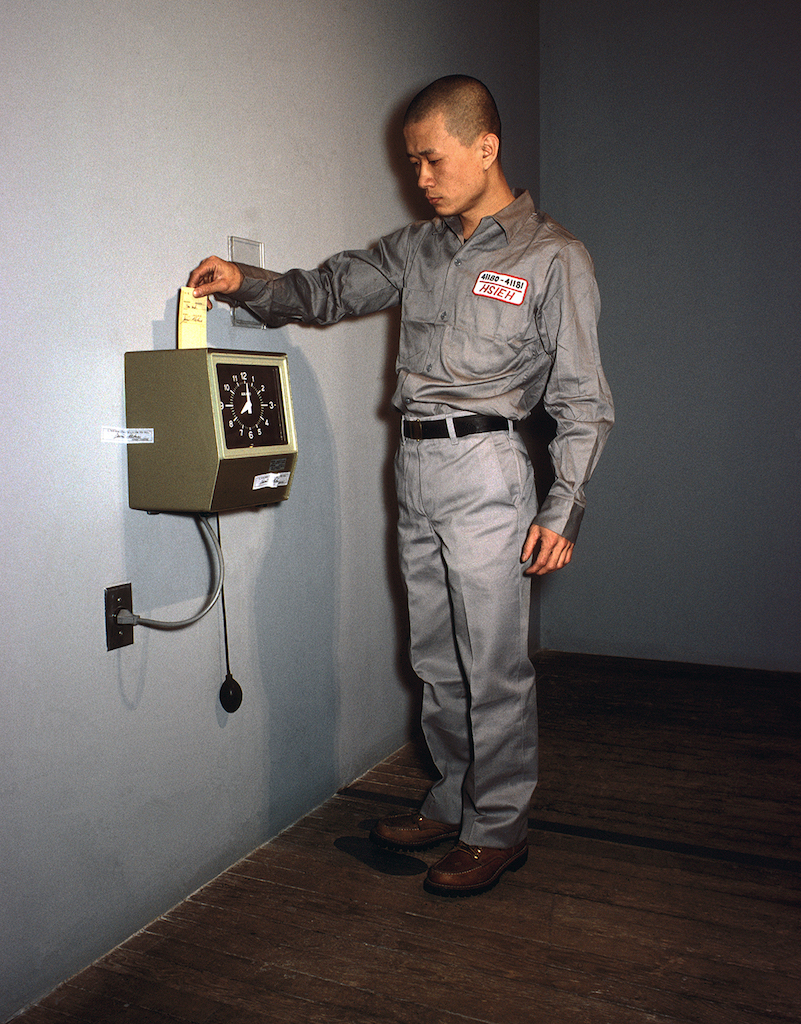 ² One Year Performance 1980-1981 (Time Clock Piece)
, Tehching Hsieh
² One Year Performance 1980-1981 (Time Clock Piece)
, Tehching Hsieh1980 - 1981
One thing that Francis Alÿs' and Tehching
Hsieh's works share in common is how they condense time, repetition, bodily
action, and the intersections between the meditative and the mundane. As a
performer yourself, how have these works informed the way in which you think
about the body, working with it, or the body’s movements?
With Francis Alÿs' The Green Line and Tehching Hsieh’s One Year Performance 1980-1981 (Time Clock Piece), what I’m interested in is the fact that the work is made of really simple actions. It is the accumulation of these simple actions and the repetition of them that then amounts to something – whether it is the simple act of punching a time clock every hour, or walking with a tub of paint through the border between Palestine and Israel. I’m inspired by this sense of perseverance and commitment in both works.I’ve been interested in the question of when movement becomes dance. Mishandled Archive talks about movement, and I’ve called this movement of the body ‘dance’. These are the movements that I made every day for the project, and there is also the moving of my body through borders. I think it comes down to a sense of consciousness – that’s what transforms the everyday movement into dance. When the mundane action passes through the consciousness of the body – both mind and muscles – maybe then it becomes a dance. In that way, even the mundane can become memorable and spectacular.
I think it comes down to a sense of consciousness – that’s what transforms the everyday movement into dance. When the mundane action passes through the consciousness of the body – both mind and muscles – maybe then it becomes a dance. In that way, even the mundane can become memorable and spectacular.
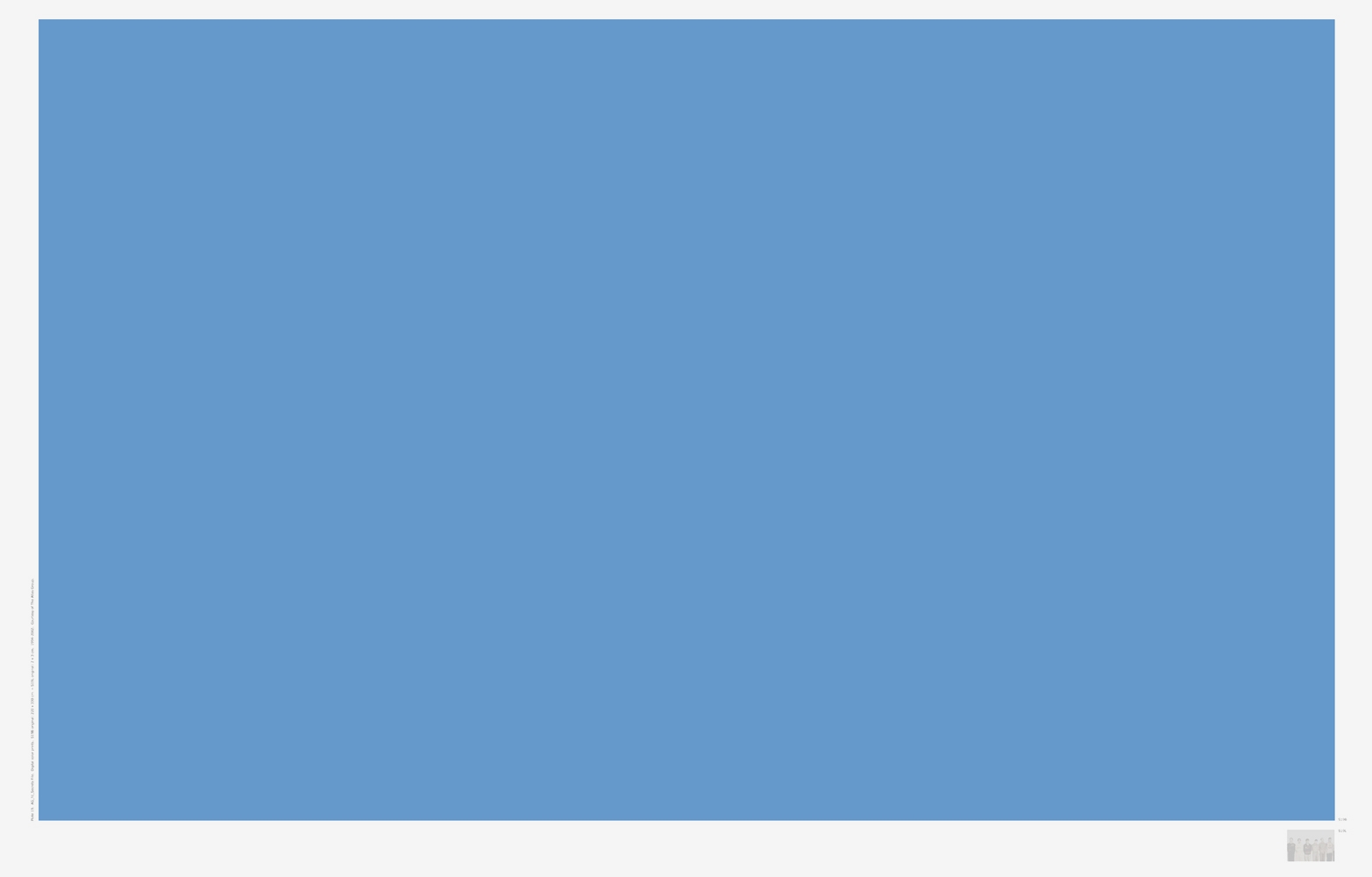
³ Secrets in the Open Sea, The Atlas Group
1994
One of
the works you picked out for our conversation is The Atlas Group’s work,
Secrets in the Open Sea. The fictional narrative built up around the work tells
of how the prints came to The Atlas Group in various shades of blue, and it was
only through careful analysis that the latent images beneath were revealed.
Even though these “latent images” were found, the shades of blue take centre
stage in the work’s final presentation, which suggests the capacity of that
which is obscured — either intentionally or not. This recalls, for me, the way
in which you experiment with different methods of obfuscation in Mishandled
Archive. Photographs might be cropped, or certain parts sliced out. What was
the role of invisibility, cloudiness, or opacity within your process?
When you encounter this project, the most obvious thing you’d see is the blue on the canvas. It is interesting to me that that blue is fiction, and the documents upon which they are based are relegated to the bottom corner of the frame – sidelined, almost. This is despite the fact that many would think of the documents as the end goal, so to speak, of this project. I find the fiction in this work intriguing, and that’s how I look at my own work as well. Fiction is a necessity. It is not a decorative trope. These histories must be told and shared in this way.
I think you've drawn on an interesting point of connection between Mishandled Archive and the Atlas Group’s Secrets in the Open Sea regarding obfuscation. Again, I think that obscurity and obfuscation is also a necessity with the histories that I’m working with. The images I work with are obscure – or cloudy, as you say – there’s so much that’s not known about that, and there’s so much that cannot be shared for different reasons. I’m working with materials that are older than myself. With the passing of time, layers of memory, forgetting, amnesia, and fear accumulate. I cannot claim to bring clarity to, make sense of, or offer a complete narrative around these materials. What I’m trying to do, instead, is to make evident this disjunction and uncertainty. This is emphasised by the way I look for alternative perspectives or angles by cropping the images or focusing on a particular detail. This often happens in Mishandled Archive. The image I show might be a detail of a person’s body, or the far corner of a larger image. You’re left with questions such as: where does one hand meet the other? How would the two objects come together in a larger image? By looking at things that would normally go unseen, I’m interested in thinking about how we might change the way we look at things.
⁴
Mishandled Archive, day 359, ‘Madonna of the Rocks’,
Tara Fatehi Irani
2017
⁵ Mishandled Archive, day 285, ‘For the Mantlepiece’, Tara Fatehi Irani
2017
2017
⁵ Mishandled Archive, day 285, ‘For the Mantlepiece’, Tara Fatehi Irani
2017


In
considering the cloudiness of these images, or the ways in which things are
cropped out or excluded, were you also thinking of access points? You mentioned
these materials being older than yourself, which brings to mind the
preciousness inherent to dealing with such personal material. Were you thinking
of denying or obscuring access to the personal and intimate nature of these
memories by way of manipulating these images?
Yes, but having said that, the project was carried out over the course of a year. There wasn’t this general arc of decisions that guided the whole process. Every day was an experiment, and there was no set formula for the entire project. There are times where I have focused on particular details within an image, and there are other times where I have taken things out completely – depriving the audience from seeing it altogether. In a way, removing a piece of an image allows for another story to be told. I am not holding back information or some parts of the visual to emphasise my power or agency as an artist. As Mishandled Archive is my project, of course I know that I am in control of this project – anything that the audience sees has gone through my filter, effectively. However, I’m not interested in the exercise of power. What I hope to explore with this project is how we might tell stories differently, and that sometimes happens through hiding things away from view.
2015
On that
note with regard to archives, let’s spend some time talking about the 2015
exhibition at the Whitechapel Gallery, Emily Jacir: Europa. Tell us about your
encounter with this exhibition, especially with regard to how it might have
opened up new possibilities for yourself in thinking about reanimating or
reimagining personal archives.
I have to admit that I was not familiar with Emily Jacir’s work before I went to see this exhibition. I hadn’t planned to see the exhibition, but I happened to be near Whitechapel Gallery when it was on, and just went in. When I saw the exhibition, I was really fascinated by the work . I was already working with personal archives and the research that led to Mishandled Archive at that point, so it was amazing to see similar themes being fleshed out with this exhibition as well. What I found interesting about the exhibition was that it was a whole experience of walking through the space and encountering bits and pieces of information. It presented a series of different works by Emily Jacir, but I felt like I was flowing through the space and encountering all of these things as they came to me. I couldn’t tell where one work ended and the other began because they all spoke to each other so well. When working with found documents or objects, there is always this sense of the personal and the intimate. A story is built around these islands of documents. For me, the story is never complete. It is never complete within my work, and I felt that it wasn’t complete in Emily Jacir’s work either.
⁷ Mishandled Archive, day 226, ‘Reality Is in Soiled Pink’,
Tara Fatehi Irani
2017
⁸ Mishandled Archive, day 159, ‘Horizon Is Only in Your Head’, Tara Fatehi Irani
2017
2017
⁸ Mishandled Archive, day 159, ‘Horizon Is Only in Your Head’, Tara Fatehi Irani
2017
Mishandled
Archive was made over the course of a year, and features images that were made
in the United Kingdom, Iran, Switzerland, Kurdistan, Germany, Italy, Ukraine,
and other places and spaces. For many, the impermeability or impossibility of
borders have always been a painful reality, and this is something that the
pandemic has made clear for a wider majority of people. There is a certain
level of irony — or is there? — that the book — a good — is able to traverse
borders that people might otherwise not be able to. Has thinking about this
deepened or developed the way in which you think about borders, in particular
its arbitrary yet selectively porous nature?
Through the year-long project, I carried the photographs of several people in my bag. Some of these people have passed on, others had never physically crossed international borders before, and for those that have crossed these borders, they were always questioned or given a difficult time. Now that I’m carrying them or holding them throughout these travels – as conceptual as it might be, I am holding one form of them – I’m the only one that’s being questioned about where I’m going and why I am going there. 2017 was a special year for me because I travelled a lot that year. I am Iranian, and as any holder of an Iranian passport would tell you, I am usually amongst those who have a tough time crossing borders. It’s not the kind of passport that lets you into places – it mostly keeps you out of places. I am aware of my privilege of being between Iran and the United Kingdom, and the fact that I was travelling a fair bit, particularly in 2017. This privilege really helped in the making of the project as well, because I was interested in the question of how far I could take these objects? There is, of course, a certain level of irony to all of this. These people in my bag cannot or could not have travelled themselves, but when they turn into photographs, and when these photographs are eventually made into a book, I can just send them through the mail. That way, their stories travel much wider and further than they ever could themselves. The thought of border crossing was always present when I was making Mishandled Archive. It has also helped me to think how arbitrary geo-political borders are. There is a tension formed around the place and even the notion of borders. When you look at this tension in places where borders meet or are uncertain, it gets murkier. It comes back to the work by Francis Alÿs that I picked out for this conversation. What does it mean to walk along the lines on a map? Who drew these lines and how?
What does it mean to walk along the lines on a map? Who drew these lines and how?
⁹ Mishandled Archive,
Tara Fatehi Irani
2020, Performance at Nuffield Theatre
Credit: Darren Andrews
¹⁰ Mishandled Archive, Tara Fatehi Irani
2020, Performance at Nuffield Theatre
Credit: Darren Andrews
2020, Performance at Nuffield Theatre
Credit: Darren Andrews
¹⁰ Mishandled Archive, Tara Fatehi Irani
2020, Performance at Nuffield Theatre
Credit: Darren Andrews

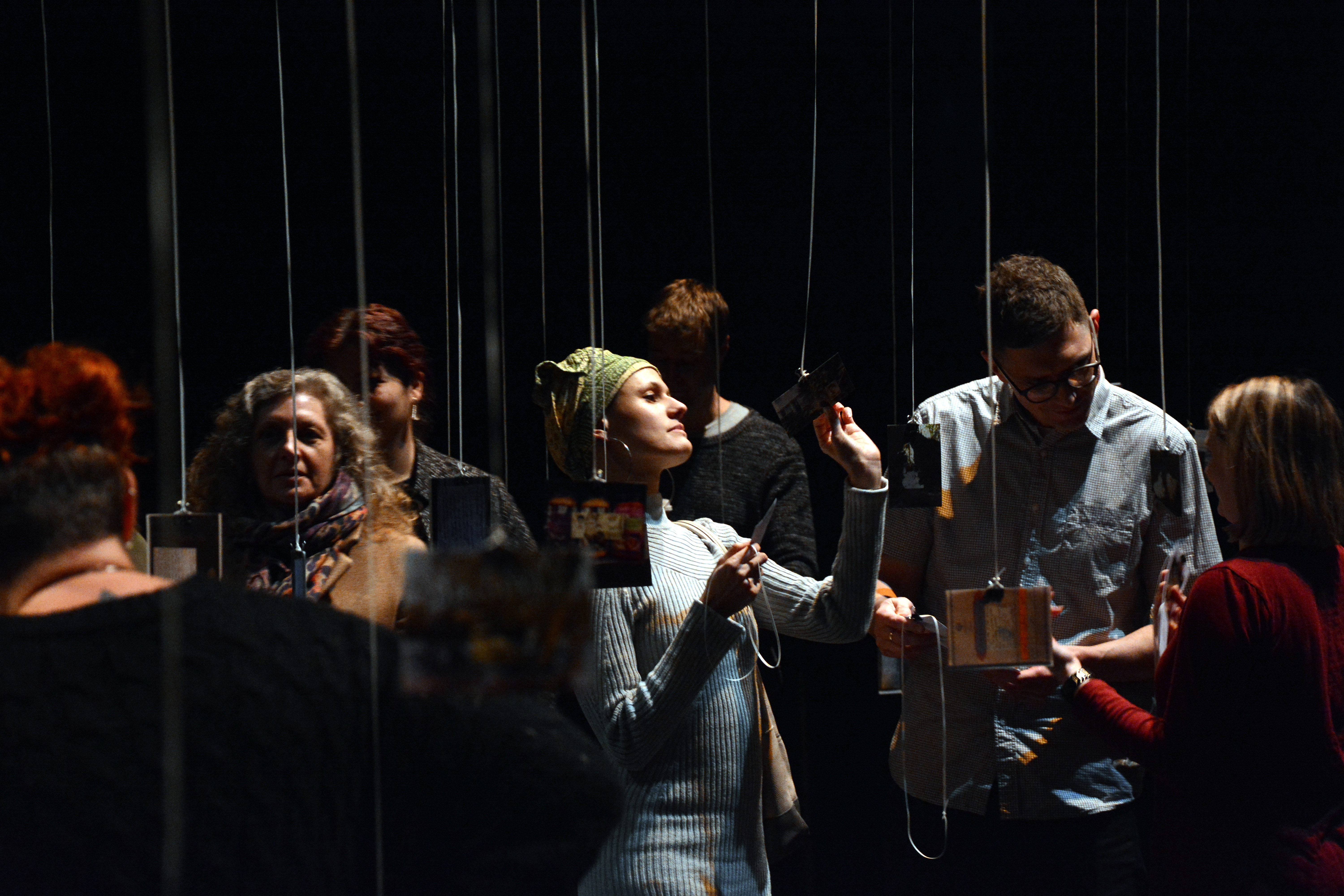
I’d also
like to spend some time talking about the process and endeavour of book making.
How did you approach making a book — in and of itself a form that is often
associated with the archival —with found and refound images? What did you find
most intriguing or unexpected about working with the format of a book?
I gained a lot of admiration for people who make books, because it is a lot of work. It is also a very fulfilling process – the process of collecting the material, thinking of the design, and putting it into the shape of a book. When it slowly begins to look like the things you’ve had in mind, there is this sense of fulfillment and joy. It’s about getting closer to the object of the book, and eventually, something you can hold. This was particularly interesting for someone like me, who comes from a performance practice. Performance is ephemeral. When you’re performing live, there are bodies and people at the receiving end – but that’s still quite different to working towards an object. I started thinking about the format of the book, and other iterations of Mishandled Archive, somewhere in the summer of 2017 – halfway through the year-long project. At that point, I didn’t really know what I wanted from the book – aside from inviting other writers and artists to think and write around the project. I knew that the format of the book was something I was interested in, particularly in relation to the cycle of turning the digital material into print. I started working on this project by digitizing printed photographs, then reprinting those digitized photographs in order to take them to various public places. I would leave these photographs there, photograph them – which basically digitized them again, post these images on Instagram – which is another form of digital archiving, before printing these digital photographs into the format of a book. Through all these cycles of digitizing the image and printing them out again, something is gained and something is lost. In the book, for example, all of my Instagram posts from Mishandled Archive are reproduced. Where you would normally be able to double tap on the image to like it on your phone or click on a hashtag, you are no longer able to interact with the printed image and hashtags that way in the context of a book. It opens a whole other realm, and fixes the Instagram posts in time by saying, “Okay this is where we are at this point in time.” I found these different archival instances really interesting – each of them contains worlds of their own. One of the essays in the book articulates this perfectly: Marco Pustianaz’s essay, Lives of the archive (A stranger’s edit).
I found the process of collaborating with others in the making of the book really interesting as well. There is the practical level where we’re talking about the process of book making, of course, but there is also the level where we’re connecting the different worlds that are being created. It is a process that takes months, or even years. It is an inspiring process.
Performance is ephemeral. When you’re performing live, there are bodies and people at the receiving end – but that’s still quite different to working towards an object.
The
making of a book really involves the entire village – there are the designers,
the printers, the publishers, the editors, and more.
Most of the book’s design was completed during the first lockdown here in the United Kingdom. I spent so much time with David Caines, who is a visual artist and who designed the book – I felt like we were almost spending the whole lockdown together, albeit remotely. As a lot of our other projects were being cancelled or postponed, we were able to really delve into this project and focus on it. You can really see how that time and dedication amounted to the book itself. It was something that we worked on meticulously – again and again. We were talking about dedication and commitment at the beginning of this conversation, and I think it comes back to that again. Making a book requires that long-term commitment – how then do you keep yourself interested in the cause for this extended period?¹¹
Mishandled Archive, Tara Fatehi Irani
2019, Performanceat Toynbee Studios
Credit: Jemima Yong
¹² Mishandled Archive, Tara Fatehi Irani
2020, Performance at Nuffield Theatre
Credit: Darren Andrews
2019, Performanceat Toynbee Studios
Credit: Jemima Yong
¹² Mishandled Archive, Tara Fatehi Irani
2020, Performance at Nuffield Theatre
Credit: Darren Andrews
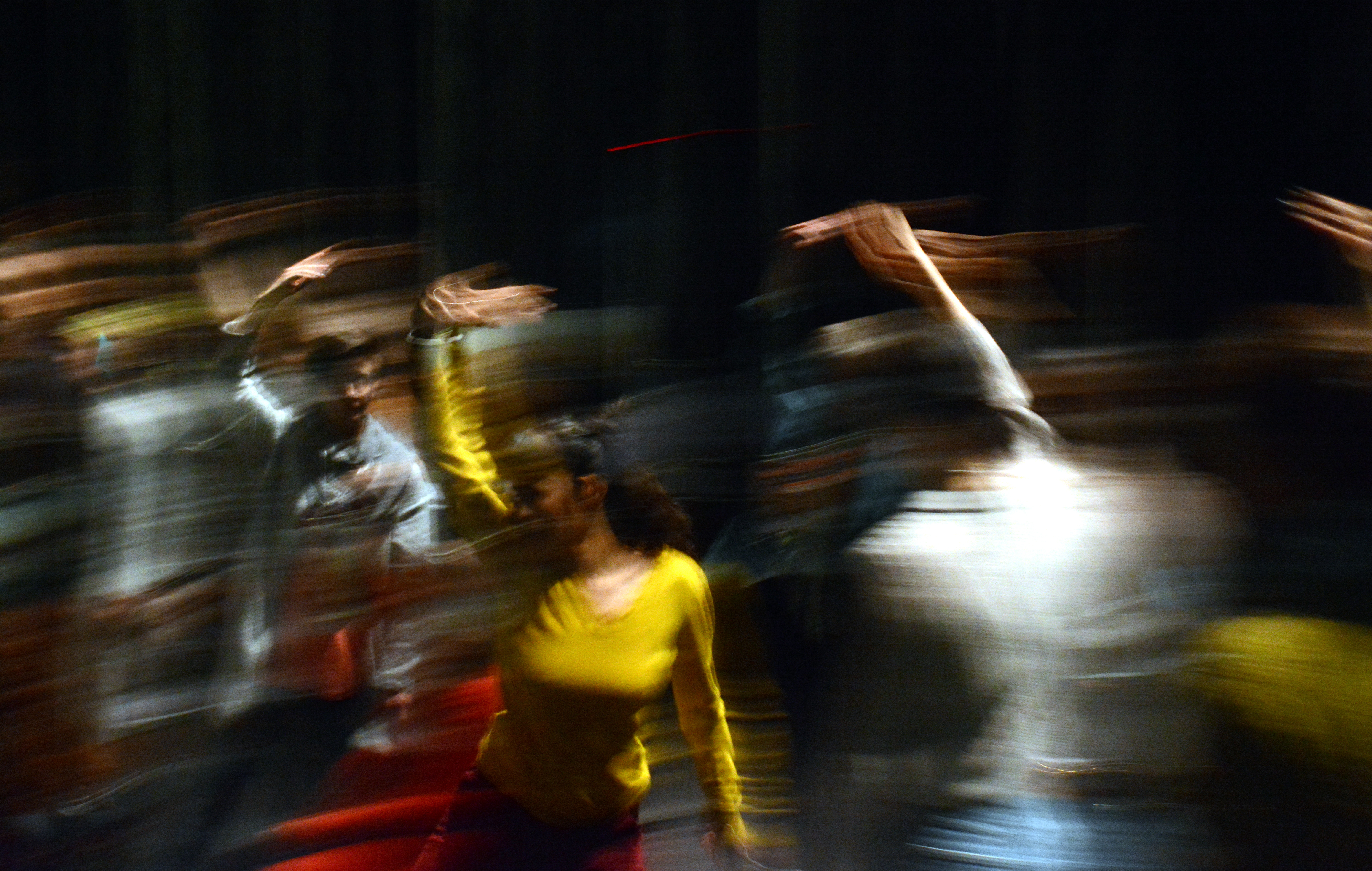
Do you
think of the book as an extension of, companion to, documentation of, or
counterpart to the performative elements of Mishandled Archive?
The book serves both as a process of recording and as a way of bringing together what was already there. In some ways, of course, it cannot capture the whole performance. There were performances that happened before the book was published, and there will be performances that happen after the book is published. The book isn’t the finale, so to speak, of the entire project. These are all the iterations the project can take, and they are all connected to one another, like a constellation of things. The book also is a way for me to share materials that would not have otherwise been made public and things that were not necessarily part of the online archive. It’s got all the dance scores, and it’s got stories of the encounters I’ve had with people in public. For me, what’s interesting about the book is that I was able to open up the invitation towards working with other people. It really is a form of collaboration. With the book, I was able to invite other artists and writers to think through the project. In a way, that has helped me to think deeper about the project as well.
It has also affected the way in which I see performance. It has left me with questions such as: how do you create? How do you make connections between many different pieces? How do you hold the space together, and how does it compare to the act of holding space for a certain number of bodies to be together in the same place? How can you translate that into the format of a book? When you’re performing live, you can share an experience with an audience directly. You can feel the room, and get an immediate response. The room feels different every time you do a performance as well, and that experience really helped me with thinking about the space of the book. The space of the book is also a performance, in some ways, so I was thinking about that in relation to the space of a live performance as well.
For me, what’s interesting about the book is that I was able to open up the invitation towards working with other people. It really is a form of collaboration.
Performance-installations
of Mishandled Archive have been held multiple times. Within these
performance-installations, the audience is enveloped into the process of making
the work. The work is made and unmade, assembled and disassembled multiple
times over. What sort of trajectories or conversations has this cyclical and
regenerative method of making performances allowed for?
I think it has been amazing to engage with different publics at the varying stages of the projects. This would range from people who encounter my performances, to those who see me on the street taking photographs, to people who find the photographs I’ve left behind. Some of these people have gotten in touch with me to ask about the project and what I’m doing with it. Those who encounter Mishandled Archive by way of Instagram also have a different relationship to it, so there were these different audiences for each piece of the project.
With the performances themselves, I often invite people to dance based on scores that I give them. Initially, audiences are hesitant. Many will say that they aren’t dancers, but once you start to break it down for them, they start to see how it is something that they can engage with and do. When multiple people are dancing at the same time, something changes in the room because more people are doing these simple actions together. The audience is invited to get lost in the archive, the photographs, and the stories that are being presented.
The work, for me, is a combination of its different iterations – the performance, the book, and the year-long experiments. Within each of these parts, there are these constellations of stories, images and bodies that are scattered across times and places. It can never be contained within a single line.
¹³ Mishandled Archive, Tara Fatehi Irani
Google Map of locations where pieces of the one year performance Mishandled Archive have been installed and left behind.
Google Map of locations where pieces of the one year performance Mishandled Archive have been installed and left behind.
Mishandled
Archive spans space, time, and straddles multiple contradictions comfortably.
It is everywhere yet nowhere all at once, inaccurate yet precise, and personal
yet collective. Do you see the project as an alternative form of mapping, and a
different way of parsing through space?
There is a map I made for Mishandled Archive that charts out all the places where I left pieces of the project behind. Looking at the map itself, it becomes incredibly clear that it’s impossible to just follow this project by way of a single, straight line. It comes back to the impossibility of a linear narrative in trying to speak to or share this journey with others. It has been a journey, but at the same time, the act of creating that journey was really important for me as well. We think of maps as tools that help us make sense of our journeys. They tell us where to go. At the same time, I do think that the map that was made for Mishandled Archive tells you that you can’t fully rely on maps. There is no single trajectory – you will find many trajectories instead. You can visit and revisit different places, but the relationship between these places is rhizomatic. I have always been interested in maps and cartography. Throughout the process of working on Mishandled Archive, I was building the map up as well. These points have grown and more have emerged over time. What started out as a small map steadily became a larger network of varying places. Points grew out of points, and you can almost feel how organic this growth was just by looking at the map itself.
An interesting thing about maps – and one of the reasons why I created a map for the project – is that they are thought of as a form of remembering as well. The map for Mishandled Archive is a form of remembering just how impossible it is for some of us to revisit all these places. All the contradictions you reference in your question are definitely present in the project, and they are present for me as well. It comes from the disjunction that is inherent within the histories that I work with, think about, or try to experiment with. It has also been present in my process as well, because that’s how I’m being guided by the materials I’m working with. The personal and the public, in particular, are always mingling with one another. I don’t see them as two separate entities. I think that they seep into one another, and I enjoy working with these different tensions. How do you create public experiences that feel very personal? How do you explicate a personal journey on a public platform? How can we create shared moments of being together?
The personal and the public, in particular, are always mingling with one another. I don’t see them as two separate entities. I think that they seep into one another, and I enjoy working with these different tensions.
Mishandled Archive is now available.
The book is published by Live Art Development Agency and supported by Arts Council England. More information about the book can be found here.
The book is published by Live Art Development Agency and supported by Arts Council England. More information about the book can be found here.
